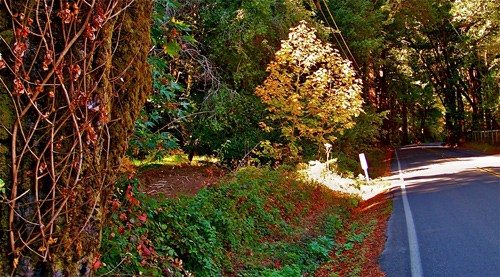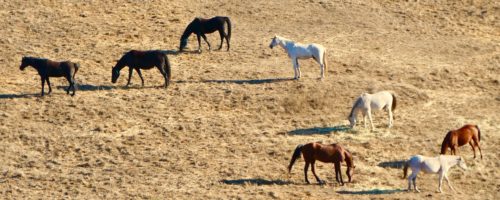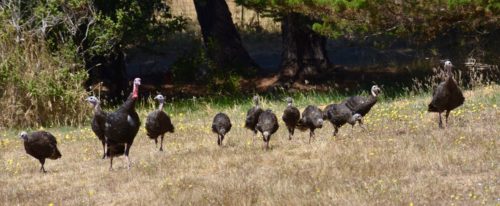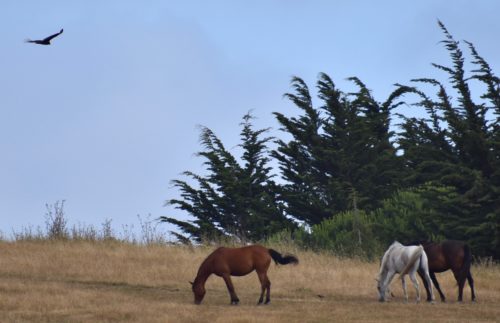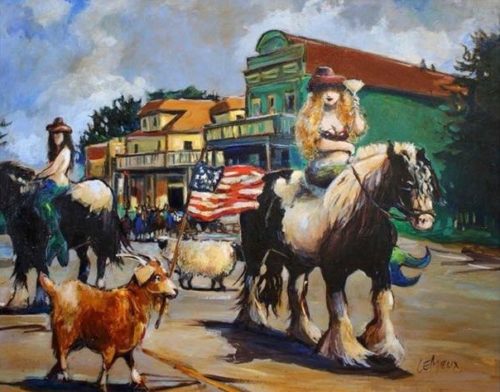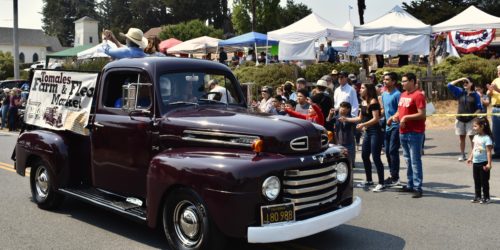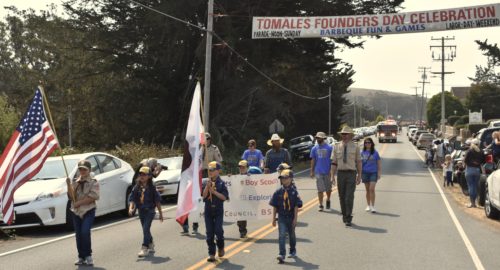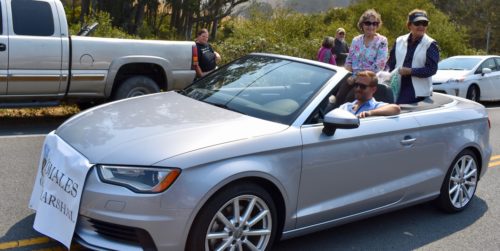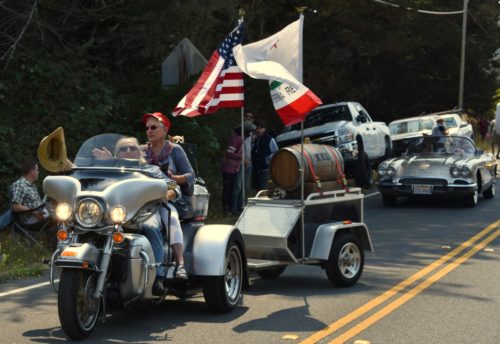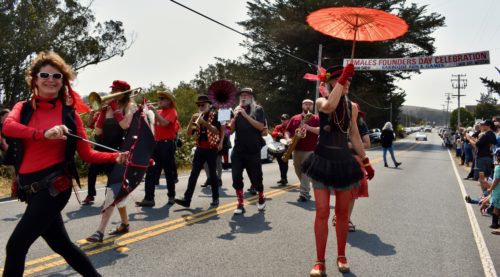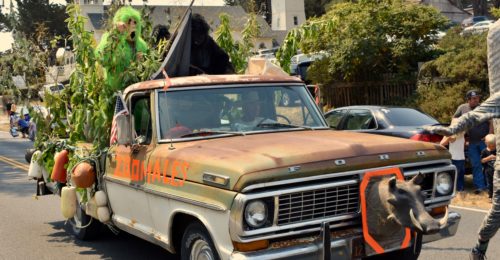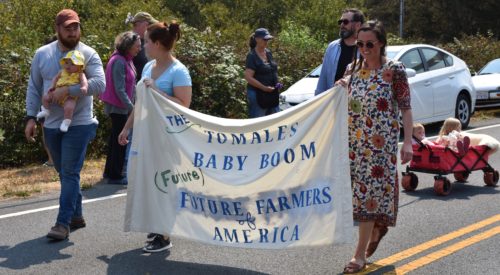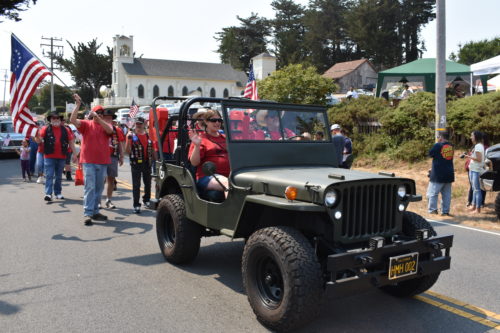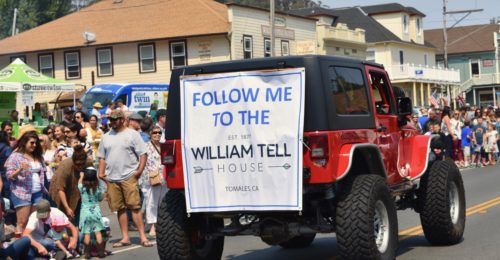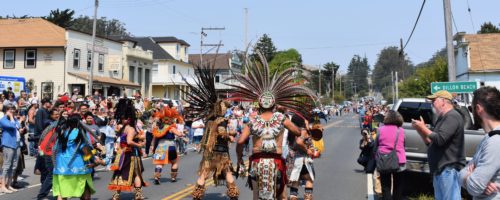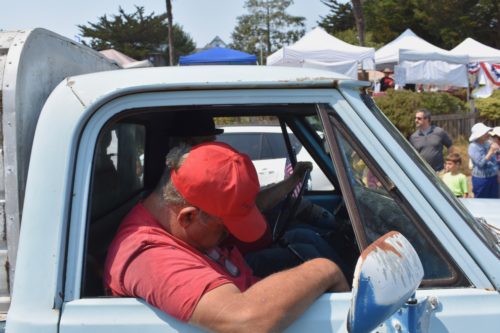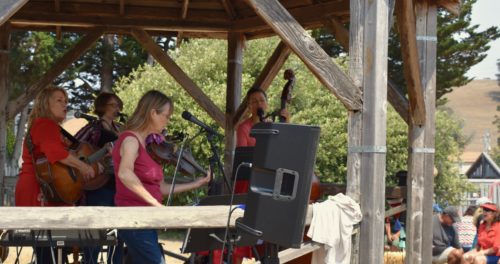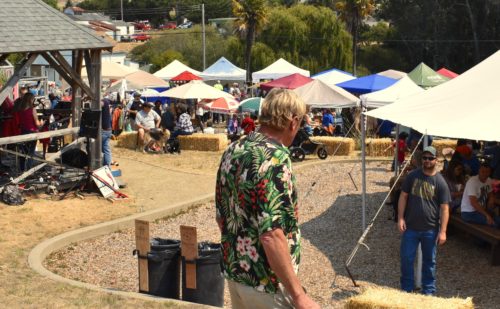Thu 27 Sep 2018
A tranquil corner of the world
Posted by DavidMitchell under West Marin nature, Wildlife
1 Comment
Caveat lectorem: Some readers have asked to receive an email alert with a link to new postings on this blog. Thank you. The link is created the moment a posting goes online. Readers who find their way here through that link can see an updated version by simply clicking on the headline above the posting.
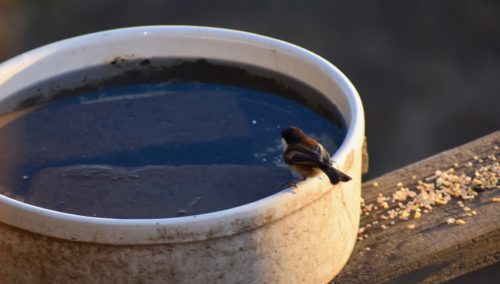
A chestnut-backed chickadee yesterday pauses in its meal of birdseed to take a drink from the soon-to-be scoured birdbath on our deck.
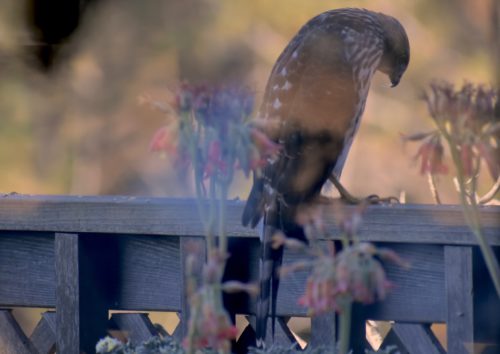
A Cooper’s hawk occasionally hunts the birds that drop by our deck. Surprisingly, these hawks prefer medium-sized birds, such as doves, to small birds such as chickadees.
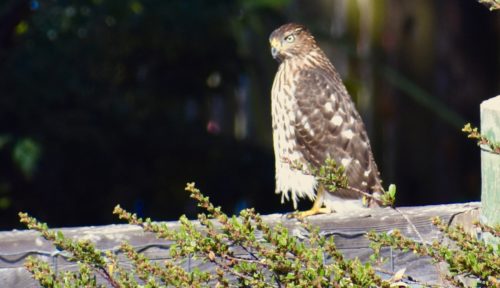
Cooper’s hawks, which seem to enjoy strutting, are also fond of jays, quail, and chickens. (Photo by Lynn Axelrod Mitchell)
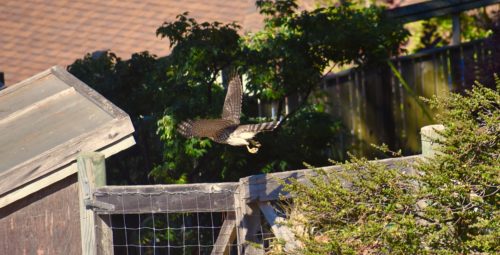
Back to the hunt, the Cooper’s hawk flies off over the garden nextdoor. (Photo by Lynn Axelrod Mitchell)
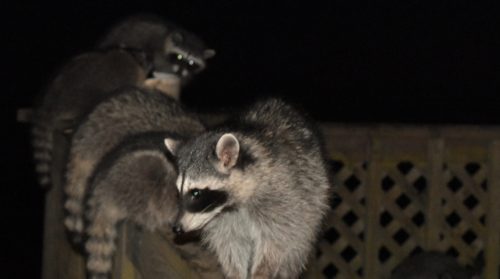
Five raccoons use the birdbath as a raccoon bath. Tonight they all tried to squeeze into the bowl at one time, but four turned out to be the limit.

Jack rabbits in the fields around Mitchell cabin seem to enjoy a tranquil life, but when something scares them, the rabbits become frantic in their flight. It’s a good thing they aren’t following the Congressional demolition derby in Washington or they’d never stop running, at least until hit by a GOP-led committee hellbent on their destination no matter how many stop signs they blow by along the way.

